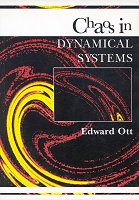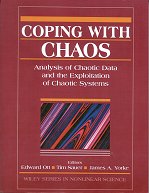Within the past decade scientists, mathematicians and engineers have realized that a large variety of systems exhibit complicated evolution with time. This complicated behavior, called chaos, occurs so frequently that it has become important for the workers in many disciplines to have a good grasp of the fundamentals and basic tools of the emerging science of chaotic dynamics.
Topics in the book include: attractors; basins of attraction; one-dimensional maps; fractals; natural measure; strange attractors; delay coordinate embedding; fat fractals; Hausdorff dimension; symbolic dynamics; stable and unstable manifolds; Lyapunov exponents; metric and topological entropy; controlling chaos; chaotic transients; fractal basin boundaries; chaotic scattering; quasiperiodicity; Hamiltonian systems; KAM tori; period doubling cascades; the intermittency transition to chaos; crises; bifurcations to chaos in scattering problems and in fractal basin boundaries; the characterization of dynamics by unstable periodic orbits; and quantum chaos in time-independent bounded systems, as well as in temporally kicked and scattering problems. Homework problems are also included throughout the book.

